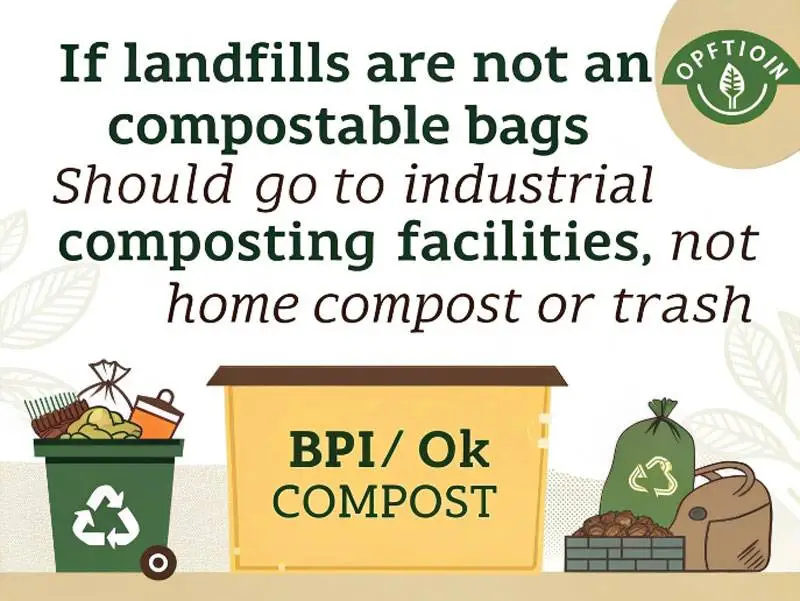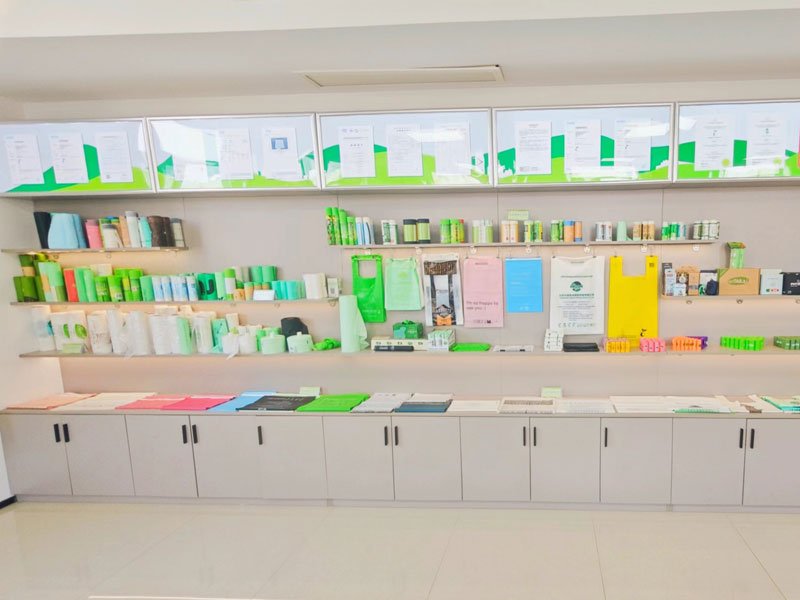With an increasing focus on sustainability, Compostable Mailers (Compostable Shipping Bags) are becoming a popular choice for businesses and individuals looking to reduce their environmental footprint. But what exactly are they and why should you consider using them? In this blog, we'll dive into everything you need to know about compostable mailers - from what they're made of to how to dispose of them properly. Let's get started!
What Are Compostable Mailers?
Compostable Mailing Bags are environmentally friendly shipping bags designed to naturally decompose into organic matter under the right conditions. Unlike traditional plastic mailers that languish in landfills for centuries, compostable mailers decompose within a few months, leaving no harmful residue behind. They are a sustainable option for e-commerce businesses, small retailers, or anyone looking to ship goods in keeping with green practices.

What Are Compostable Mailers Made Of
Polylactic Acid (PLA):
Source: It is usually polymerized from lactic acid extracted from fermented renewable plant resources such as corn starch, cassava or sugar cane.
Features: It is a common bio-based plastic, relatively stiff and transparent (but courier bags are usually opaque). It can be decomposed under industrial composting conditions.
PBAT (Polybutylene Adipate Terephthalate):
Source: Although its monomers are partially derived from petrochemical products, it is an aliphatic-aromatic copolyester designed to be fully biodegradable (including in a composting environment).
Features: It is very flexible and strong, similar to the properties of traditional plastics (such as LDPE), and is often used to improve the brittleness of PLA or other bioplastics. It is a very critical and common component in compostable courier bags because it provides the necessary softness and toughness.

Starch Blends:
Source: Direct use of plant starch such as corn and potatoes, modified or blended with other compostable polymers (such as PLA, PBAT).
Features: Relatively low cost and wide source. Pure starch materials are sensitive to water and brittle, so they usually need to be mixed with other polymers to improve performance (such as waterproofness and strength).
PHA (Polyhydroxyalkanoates):
Source: Biopolyester produced by fermentation of microorganisms under specific nutritional conditions.
Features: Biodegradable in a wider range of environments (sometimes including soil, fresh water and even seawater), with diverse performance. However, the current production cost is high, and its application in express bags is relatively less common than PLA and PBAT.
Common combinations:
In order to achieve the flexibility, strength, waterproofness and compostability required for express bags, manufacturers usually use blends of these materials. The most common combination is:
PLA + PBAT: Utilize the bio-based source and certain rigidity of PLA, combined with the flexibility and rapid degradation characteristics of PBAT.
Starch + PBAT (+/- PLA): Starch is added to reduce cost and increase bio-based content, while PBAT and possibly a small amount of PLA provide the desired physical properties.
Other possible ingredients:
Fillers: Sometimes a small amount of natural mineral fillers (such as calcium carbonate) are added to reduce cost and adjust physical properties, but the amount added needs to be controlled so as not to affect compostability.
Inks: The inks used for printing patterns and text must also be certified non-toxic, compostable inks (usually water-based or plant-based inks).
Adhesives: The adhesive strips at the seal also need to use compostable adhesives to ensure that the entire bag meets composting standards.

Are Compostable Mailers Good for the Environment?
Yes, Biodegradable Mailers can be great for the environment—when used and disposed of correctly. They reduce reliance on fossil-fuel-based plastics and help cut down on landfill waste. When composted, they turn into organic matter that enriches soil, supporting a circular economy.
However, their eco-friendliness depends on a few factors:
- Proper Disposal: If they end up in a landfill instead of a compost pile, they may not break down as efficiently due to a lack of oxygen and heat.
- Production Impact: While made from renewable resources like corn, large-scale production can strain agricultural systems.
Advantages of Biodegradable Mailers
- Eco-Friendly Breakdown: They decompose naturally, reducing plastic pollution.
- Versatility: Available in various sizes and strengths, they’re suitable for shipping clothes, books, or small electronics.
- Brand Appeal: Using sustainable packaging boosts your company’s green credentials, appealing to eco-conscious customers.
- Reduced Carbon Footprint: Compared to traditional plastics, their production often emits fewer greenhouse gases.
- Non-Toxic: They leave no harmful residues when composted, unlike conventional plastics that leach chemicals.
Compostable vs. Biodegradable Mailers
Compostable Mailers: Break down into nutrient-rich compost within a specific timeframe (usually 90-180 days) in composting conditions, leaving no toxins behind. They require heat, moisture, and microbes to
Biodegradable Mailers: Degrade over time with the help of natural processes, but there’s no set timeline or guarantee they’ll become harmless compost. Some may break into microplastics, which still harm the environment.
In short, all compostable mailers are biodegradable, but not all biodegradable mailers are compostable. For maximum eco-impact, compostable is the better choice.
Compostable vs. Recyclable Mailers
| Type | Pros | Cons |
|---|---|---|
| Compostable Mailers | Turn into compost, reducing waste entirely if composted correctly. | Not recyclable; require composting access, which isn’t universal. |
| Recyclable Mailers (e.g., made from recycled plastic or paper) | Can be processed and reused, leveraging existing recycling systems. | Recycling plastic still uses energy, and paper mailers may lack durability or water resistance. |

Home Compostable vs. Industrial Compostable Mailers
Home Compostable: Decompose in a backyard compost pile within 180 days, needing only moderate heat and moisture. They’re ideal for individuals with home setups.
Industrial Compostable: Require the high temperatures (50-60°C) and controlled conditions of a commercial composting facility, breaking down in as little as 90 days. They’re less flexible for home use.
Check the label to know which type you have—home compostable mailers are rarer and often pricier due to their specialized materials.
How to Dispose of Compostable Envelopes
- Remove Non-Compostable Parts: Peel off plastic tape, labels, or stickers (unless they’re certified compostable too).
- Home Composting: If labeled “home compostable,” add it to your compost bin. Tear it into smaller pieces to speed up decomposition.
- Industrial Composting: For industrial-only mailers, find a local facility via your municipality or services like “Find a Composter.”
- Trash as a Last Resort: If composting isn’t an option, they’ll still break down faster in a landfill than plastic, but this isn’t ideal.
Where to Buy Affordable Compostable Mailers
- Amazon: Offers a range of compostable mailers from brands like KTOB and Kipulu at competitive prices.
- EcoEnclose: Specializes in sustainable packaging, including compostable options, with bulk discounts.
- NoIssue: Affordable, customizable mailers with a focus on sustainability.
- Etsy: Small sellers often offer eco-friendly mailers at reasonable rates, especially for smaller orders.
Compare prices, certifications (like BPI or TUV Austria), and shipping costs to find the best deal.
How to Label Compostable Packaging for Customers
- Certifications: Display logos like BPI, OK Compost, or ASTM D6400 to prove authenticity.
- Instructions: Include simple text like “Compostable—Remove Tape Before Composting” on the mailer or a QR code linking to disposal tips.
- Visuals: Use green icons (e.g., a leaf or compost bin) to signal eco-friendliness.
- Transparency: Note whether it’s home or industrial compostable to avoid confusion.

What Are the Best Compostable Mailer Brands?
NoIssue: Customizable, 100% compostable mailers made from PLA and PBAT, certified for home and industrial composting.
Hero Packaging: Durable, home-compostable “HEROPACKS” with a sleek matte finish, popular in Australia and beyond.
Better Packaging Co.: Their “Real Dirt Bags” are plant-based, certified home compostable, and loved by over 25,000 customers.
Kipulu: Affordable, padded compostable mailers ideal for fragile items, available on Amazon.
EcoEnclose: Offers compostable options alongside recycled mailers, with a focus on circularity.
Conclusion
Compostable mailers are a fantastic way to ship sustainably, blending functionality with environmental responsibility. From their plant-based materials to their ability to enrich soil, they offer a promising alternative to plastic. Whether you’re a business owner or an individual, switching to compostable mailers is a small step with a big impact. Ready to go green? Explore your options, label them clearly, and start shipping with a conscience today!





